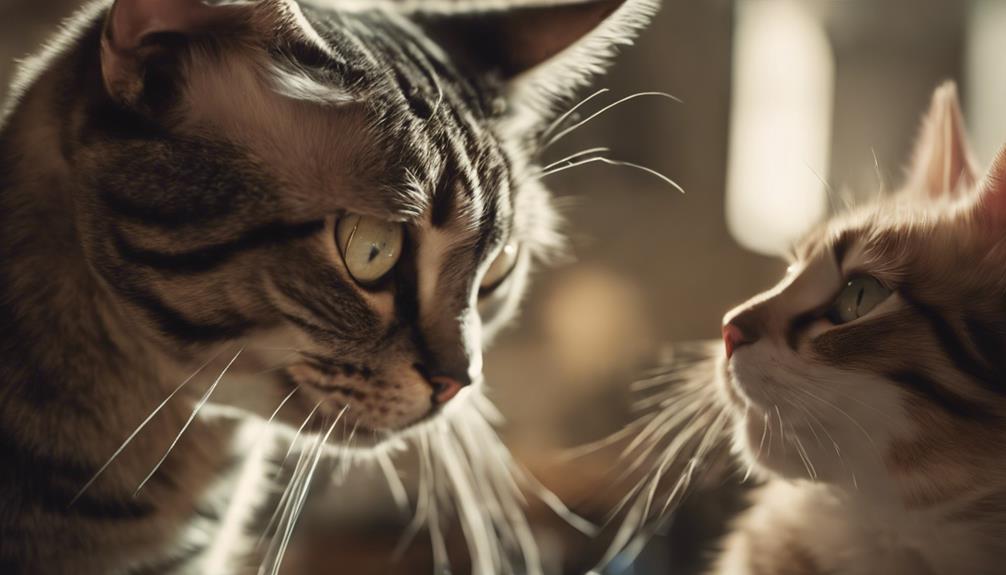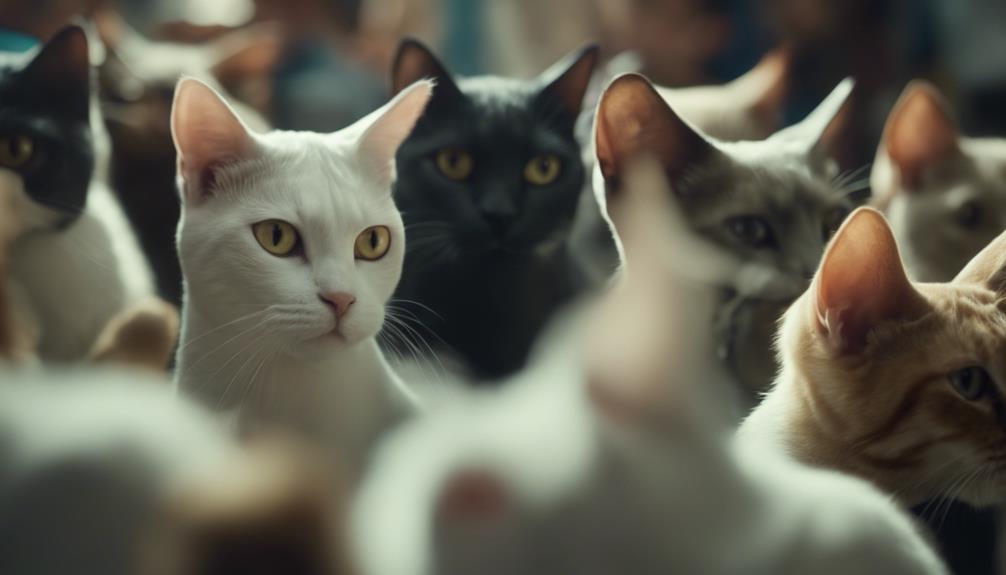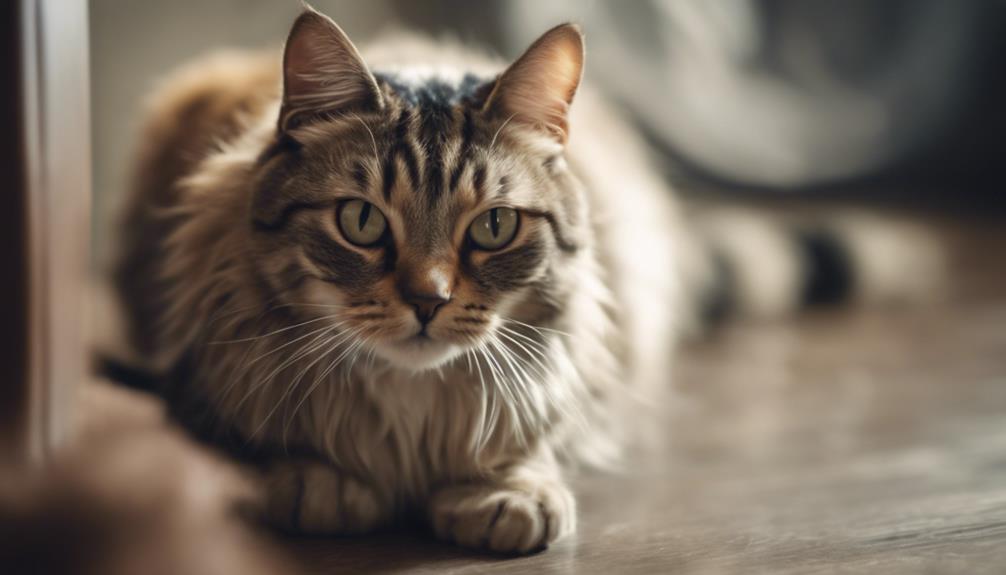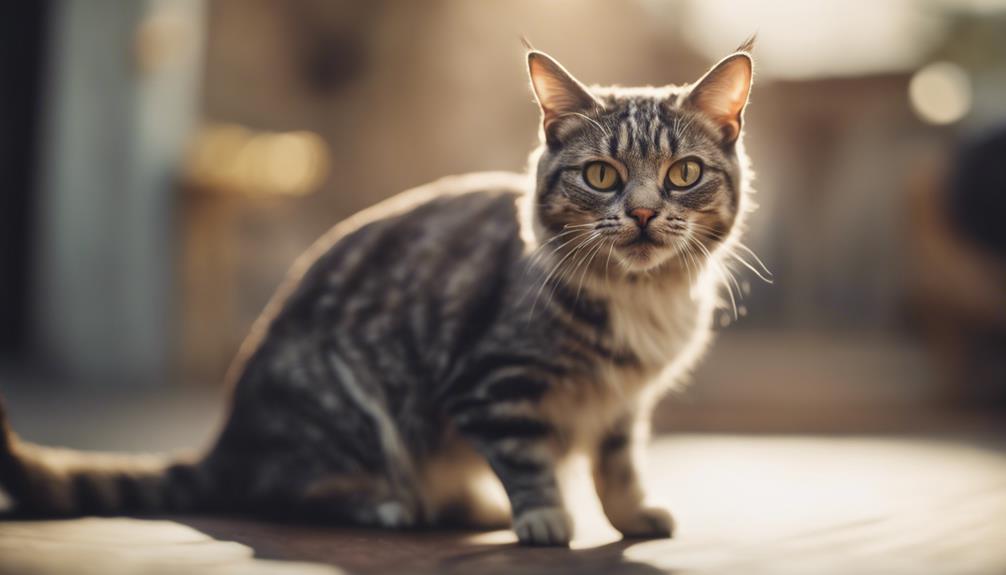How to Monitor and Adjust Socialization Based on Your Cat’s Reactions

Monitoring and adjusting socialization with your cat is crucial for maintaining a healthy relationship. Pay attention to your cat's body language and vocalizations to understand its reactions. If your cat seems stressed or uncomfortable, give it space and time to calm down. Use positive reinforcement, like treats or toys, to encourage good behavior during socialization. Gradually introduce new people, animals, or environments to help your cat feel more comfortable. Remember that every cat is unique, so be patient and adaptable in your approach to socialization.
Understanding Cat Body Language
Understanding a cat's body language is crucial for effective communication and bonding with your feline companion. Body language cues play a significant role in feline communication, allowing cat owners to decipher their pets' feelings and intentions. By observing tail movements, ear positions, and overall posture, individuals can gain valuable insights into their cat's emotional state and behaviors.
Understanding behavior based on these cues is essential for fostering positive cat interactions and building a strong relationship with your pet.
For example, a cat with a relaxed body posture, gently swaying tail, and ears facing forward is likely content and open to interaction. On the other hand, a cat with a tense body, twitching tail, and flattened ears may be feeling scared or agitated. Recognizing these signs enables cat owners to adjust their approach accordingly, providing comfort and support when needed.
Interpreting Vocal Cues

Cats use vocal cues to communicate various needs and emotions. Meowing can signal a desire for attention or food. Growling or hissing indicates fear or aggression. Purring is a sign of contentment and relaxation.
Meowing for Attention
When your cat meows for attention, it's important to pay attention to the tone and duration of their vocal cues to understand their needs effectively. Cats use meowing behavior as a form of attention seeking and vocal communication, conveying various messages through their sounds.
Here are some ways to interpret your cat's meows:
- Soft, short meows may indicate a general greeting or a request for a quick interaction.
- Loud and persistent meowing could signal hunger or a desire for playtime.
- Pleading or high-pitched meows might suggest discomfort or a need for reassurance.
- Meowing accompanied by rubbing against you could mean your cat seeks affection.
- Meows with a hint of frustration or impatience may indicate a need for a change in the current situation.
Growling or Hissing
Growling or hissing from your cat can be a sign of discomfort or perceived threat, requiring careful observation and understanding of their vocal cues. These vocalizations often indicate aggressive behavior or fearful reactions in cats.
When your cat growls or hisses, it's crucial to approach the situation calmly and avoid escalating tensions. Give your cat space and time to calm down before attempting to interact with them further.
It's essential to respect your cat's boundaries and not force them into uncomfortable situations that may trigger more aggressive responses. By recognizing and responding appropriately to growling or hissing, you can help create a safe and secure environment for your feline friend.
Purring Contentedly
Understanding cat vocal cues can provide valuable insights into your feline companion's emotions and well-being, with purring contentedly often serving as a positive indicator of comfort and satisfaction. When your cat is purring contentedly, it signifies a state of relaxation and happiness. Here are some ways to interpret and respond to your cat's contented purring:
- Gentle kneading or 'making biscuits' with their paws
- Slow blinking or half-closed eyes
- Relaxed body posture, possibly lying on their side or back
- Approaching you for affection or sitting close by
- Soft and consistent purring sound
Recognizing Stress Signs

Recognizing stress signs in cats is crucial for their well-being. Understanding behavioral cues that indicate stress can help cat owners intervene early.
Stress Signs in Cats
Cats often display subtle indicators when experiencing stress, which can be crucial in maintaining their well-being and happiness. When monitoring your cat for stress signs, watch out for the following anxiety indicators and fear responses:
- Anxiety Indicators:
- Excessive grooming
- Decreased appetite
- Hiding or withdrawal
- Aggression towards humans or other animals
- Excessive vocalization
Recognizing these signs promptly allows for appropriate adjustments to your cat's environment or socialization routine. By understanding these stress signals, you can help create a more comfortable and harmonious living space for your feline companion.
Behavioral Cues to Watch
Watching for subtle behavioral cues is essential in identifying stress signs in cats, enabling proactive adjustments to their environment for improved well-being. Signs to watch for include tail flicking, ear flattening, eye dilation, and a tense body.
When a cat feels stressed, their tail may flick rapidly or their ears may flatten against their head. Dilated eyes and a tense body posture are also indicators that your cat may be experiencing stress. By paying close attention to these cues, you can intervene early to create a more comfortable and safe space for your feline friend.
Understanding these signals allows you to respond promptly, helping your cat feel more at ease and fostering a harmonious environment for both you and your pet.
Creating Safe Social Spaces

In order to foster positive interactions among feline companions, it's crucial to establish secure and welcoming social environments. Cats, like humans, thrive in environments where they feel safe and comfortable.
Here are some key ways to create safe social spaces for your feline friends:
- Designated Safe Zones: Provide areas where your cat can retreat to when feeling overwhelmed or anxious.
- Comfortable Hideouts: Offer cozy hiding spots like cat trees, shelves, or covered beds for a sense of security.
- Interactive Play Areas: Set up spaces with toys and scratching posts to encourage play and social interaction.
- Vertical Space: Cats feel secure when they can observe from above, so include cat shelves or window perches.
- Soothing Environment: Create a calming atmosphere with soft lighting, soothing music, and pheromone diffusers to promote relaxation.
Gradual Socialization Techniques

To facilitate a smooth and successful integration of cats in a social setting, gradual socialization techniques play a pivotal role in ensuring their comfort and well-being. When introducing cats to new environments or individuals, a slow introduction and controlled exposure are key to preventing stress and anxiety. This gradual approach allows cats to acclimate at their own pace, reducing the likelihood of negative reactions.
| Slow Introduction | Controlled Exposure |
|---|---|
| Start with short, supervised interactions | Gradually increase exposure levels |
| Allow the cat to explore new surroundings at their own pace | Monitor the cat's body language for signs of stress |
| Provide safe spaces for the cat to retreat to if needed | Respect the cat's boundaries and comfort levels |
Positive Reinforcement Methods

Utilizing positive reinforcement methods consistently can significantly enhance a cat's socialization experience and strengthen their bond with humans. By incorporating clicker training and treat rewards, cat owners can create a positive environment that promotes learning and trust. Here are some effective positive reinforcement methods to aid in your cat's socialization journey:
- Clicker Training: Clicker training involves using a clicker device to signal to your cat that they've performed a desired behavior correctly. This method helps reinforce positive actions and encourages learning.
- Treat Rewards: Offering treats as a reward for good behavior can motivate your cat to engage in socialization activities. Choose treats that your cat finds irresistible to make the experience more enjoyable for them.
- Consistency is Key: Maintain a consistent routine when using positive reinforcement methods to help your cat understand expectations and build trust.
- Patience and Encouragement: Be patient with your cat as they navigate socialization, and provide plenty of encouragement to boost their confidence.
- Celebrate Small Wins: Acknowledge and celebrate small achievements during socialization sessions to keep your cat motivated and engaged.
Seeking Professional Guidance

For cat owners seeking professional guidance in enhancing their pet's socialization skills, consulting with a certified animal behaviorist or veterinarian can provide valuable insights and tailored strategies.
Professional consultation offers expert advice on behavior modification and effective socialization strategies that are specifically designed for your cat's needs. These professionals have the experience and knowledge to assess your cat's behavior, identify any underlying issues affecting their socialization, and create a customized plan to address these concerns.
Frequently Asked Questions
Can Cats Experience Social Anxiety or Fear of Socialization With Other Animals?
Cats can experience social anxiety or fear when interacting with other animals. Understanding feline behavior and employing appropriate socialization techniques can help alleviate anxiety triggers and promote positive social bonding experiences for your pet.
Are There Any Specific Breeds of Cats That May Require More Socialization Than Others?
Some breeds of cats, such as Siamese and Bengal, may benefit from more socialization due to their high energy levels and need for mental stimulation. It's essential to understand each cat's unique needs for successful interaction.
How Can I Tell if My Cat Is Feeling Overwhelmed During Socialization and Needs a Break?
When socializing a cat, watch for signs of stress like flattened ears or dilated pupils. If overwhelmed, they may need a break. Provide time outs and safe spaces for them to decompress and feel secure before resuming socialization efforts.
Are There Any Alternative Methods to Positive Reinforcement That Can Be Effective in Socializing a Cat?
Negative reinforcement, desensitization, counter conditioning, and habituation are alternative methods to positive reinforcement for socializing a cat. Each approach has its benefits in gradually helping a cat adjust to new situations and interactions.
What Are Some Common Mistakes That Cat Owners Make When Trying to Socialize Their Cats, and How Can They Be Avoided?
Ever wondered why some cat owners struggle with socialization? Common mistakes like rushing introductions and ignoring signs of stress can hinder progress. Proper techniques involve patience, gradual exposure, and respecting the cat's boundaries for successful socialization.










